What Is Subscription Management Software?
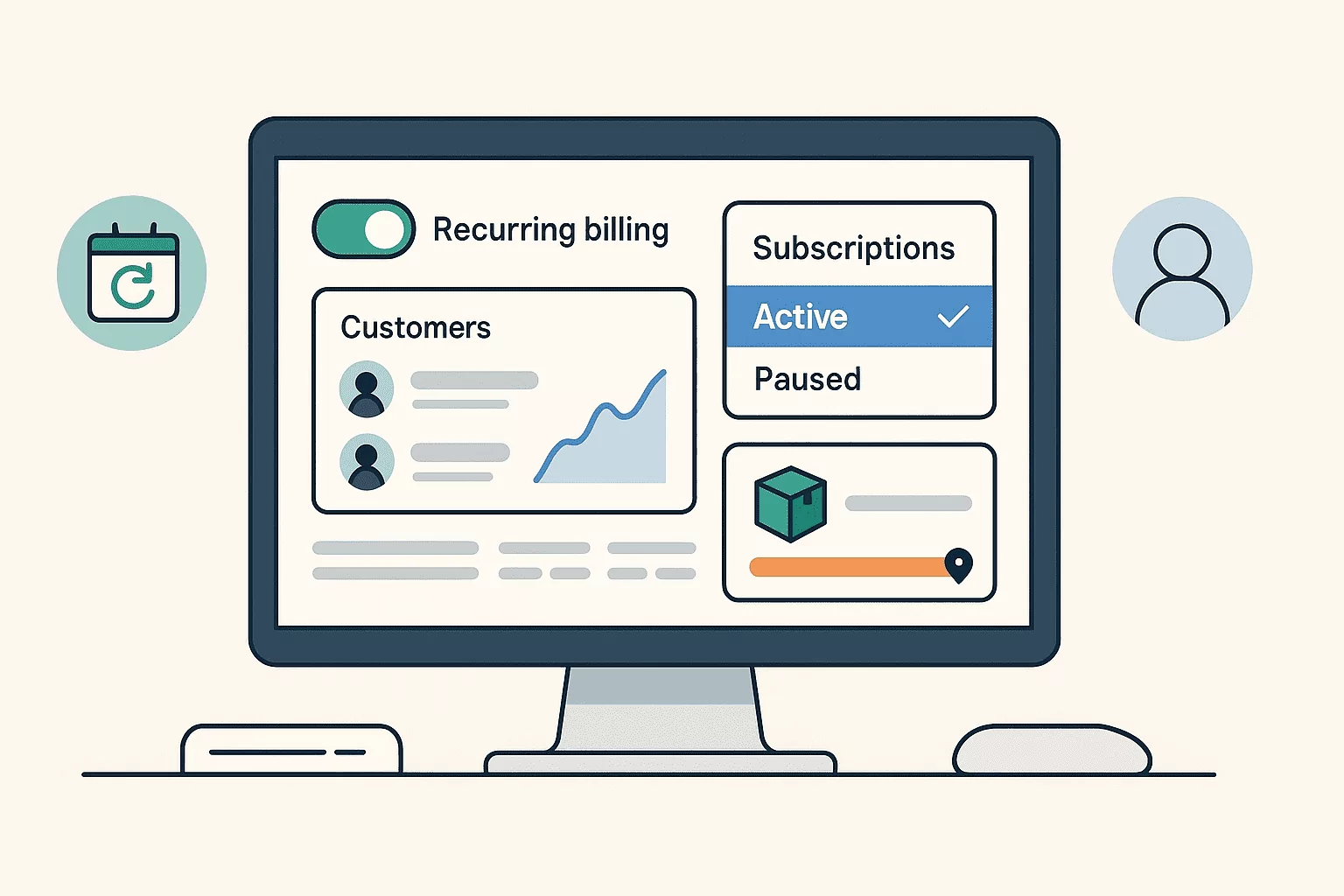
Subscription management software helps businesses manage a subscription’s entire lifecycle, from sign-up and billing to renewals, cancellations, and customer retention.
This makes it essential for any business that earns revenue through recurring payments, whether selling physical subscription boxes, digital content, SaaS products, or memberships.
At its core, this software automates key processes like recurring billing, invoicing, and payment collection. But the best platforms go further, offering tools to manage failed payments, upgrade or downgrade plans, track churn, and give customers more control through self-service portals.
The right platform can reduce admin work, improve customer satisfaction, and support scalable growth.
Here are a few things to look out for when choosing a subscription management software platform:
🔍 Does the billing system support your pricing model by enabling flat-rate, usage-based, and prepaid plans?
🔍 Is it intuitive, or does it require developer support? If the latter, do you have developer resources available?
🔍 Can it handle automated renewals, dunning, email flows, and plan changes?
🔍 Does it support a good customer experience, for example, by providing a customer portal for managing subscriptions?
🔍 Will it integrate with your existing ecommerce, CRM, or accounting tools?
Different platforms suit different business models. Finding one to suit yours depends on its size, complexity, and how important subscriptions are to your revenue.
7 Best Subscription Management Solutions
Here are seven of the best subscription management software systems available. We’ve aimed to cover a broad range of use cases, so there should be something for everyone.
1. Subbly
Best for: Subscription-first ecommerce businesses that want full control without developer complexity.
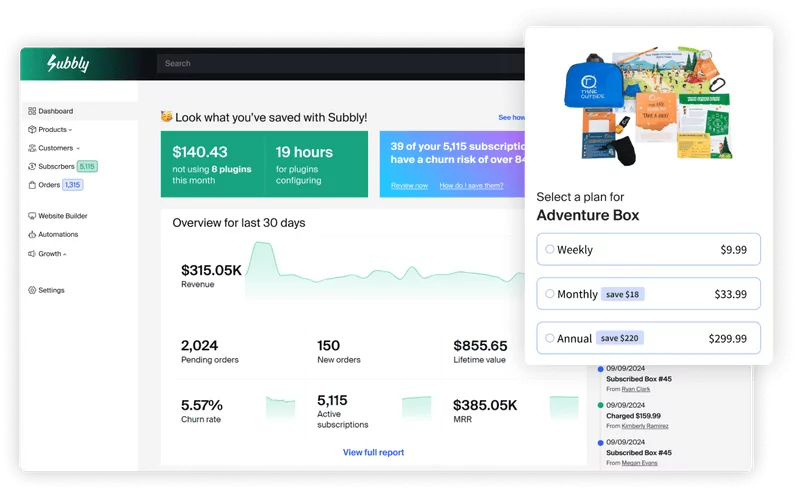
Subbly is an all-in-one subscription management platform designed specifically for direct-to-consumer (DTC) and subscription-first businesses.
Many generic platforms like Shopify or WooCommerce can support subscriptions, but only if you use third-party apps.
These apps often have limited functionality, don’t integrate well, and are full of bugs. This results in more admin and stops you from scaling your business.
With Subbly, everything is designed around managing customer subscriptions. It gives teams the power to launch flexible plans, automate customer journeys, and personalize experiences, all without touching code.
This makes it a strong choice for founders who want a complete solution that handles both the customer-facing and back-office parts of their subscription business.
Subbly is designed to scale with your business, and its built-in advanced subscription management capabilities mean it works just as well for medium and larger businesses.
Users often praise Subbly for its ease of use, responsive customer support, and fair pricing. It’s especially useful for businesses that need more than a billing plugin, but don’t have the time or resources to build a custom system.
While Subbly isn’t built for complex B2B enterprise accounting or billing logic (like Zuora or Chargebee), it hits a sweet spot for founders, operators, and small teams who want powerful functionality without complexity.
Key features:
- Supports advanced subscription logic, enabling prepaid plans, pay-per-box, and custom renewal cycles
- Customer portal with self-service features
- Built-in website builder and customizable checkouts
- Automates common workflows like email flows, tagging, upsells, and failed payment recovery
- Enables personalization surveys, analytics dashboard, and integrations with third-party monitoring and analytics so you can track your business’s progress
✔️ Pros
- Subscription-first platform, no need for add-ons or plugins
- No-code setup: Ideal for non-technical founders and small teams
- Transparent pricing with no revenue share or hidden fees
- The system is regularly updated and has responsive support and community
❌ Cons
- Not designed for complex B2B SaaS billing
- Fewer native integrations than large enterprise platforms (but likely to be expanded in the near future)
- Advanced analytics may require external tools
Pricing: Plans start at $14 USD/month for the Lite plan. Additionally, there are per-transaction fees that vary by payment gateway (Stripe, Auth.net, Braintree, PayPal) and pricing tier, ranging from 0.25% to 1.25%. A free trial is available, and all plans include core subscription functionality.
2. Recurly
Best for: Subscription SaaS businesses that prioritize churn reduction and payment recovery.
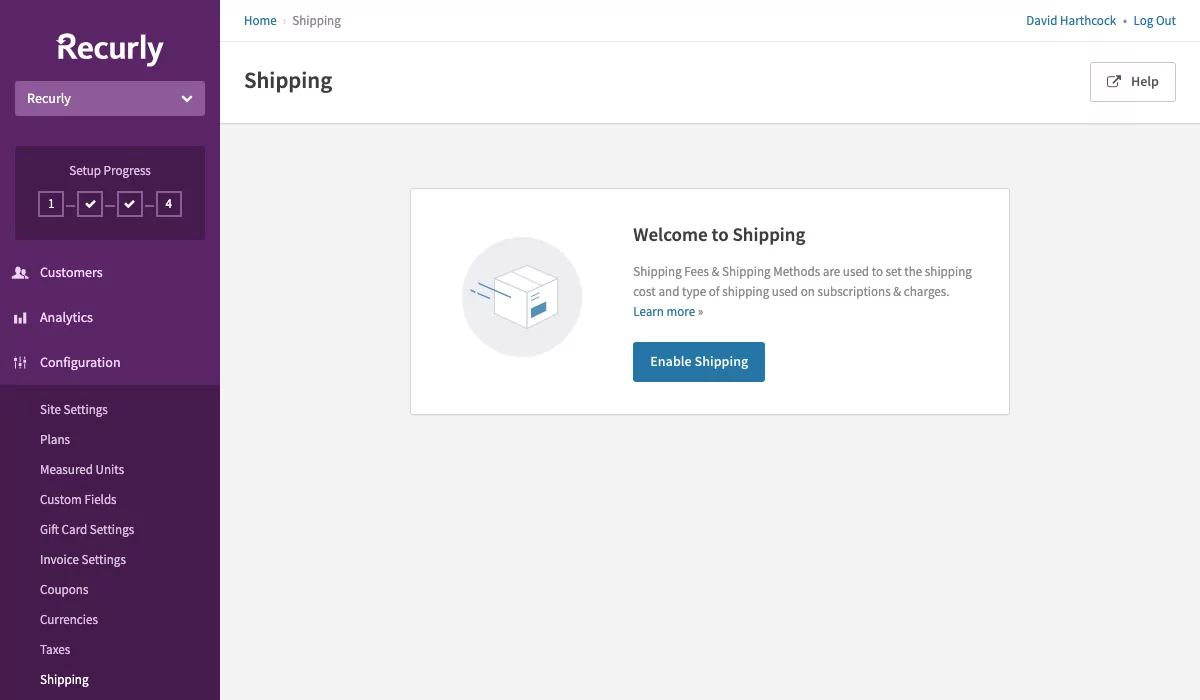
Recurly is built for businesses that deliver their services online and depend on recurring revenue, like SaaS platforms, where retention is just as important as acquisition.
It suits businesses with high transaction volumes that rely on automation to reduce churn and recover lost payments.
What makes Recurly stand out is its ability to reduce involuntary churn. When a customer’s payment fails, the platform automatically retries the charge at optimized intervals and sends reminders to update payment details.
This avoids customer services having to manually intervene in failed payments or for technical teams to have to set up complex integrations and payment rules.
Recurly also offers cancellation insights and win-back tools to help keep subscribers around for longer.
It handles various pricing models and includes built-in tools to calculate tax based on customer location.
It also integrates with a wide range of third-party tools, including Salesforce for customer relationship management, NetSuite for financial operations, and Slack for internal team notifications.
While easier to implement than enterprise-grade platforms like Zuora, Recurly still leans toward mid-sized or scaling companies. It may feel overpowered for smaller businesses, and pricing scales with usage, making costs harder to predict.
Key features
- Smart dunning system that uses machine learning for failed payment retries
- Supports plan options like upgrades, trials, coupons, and one-time charges
- Revenue recognition and tax compliance tools
- Integrates with common CRM, accounting, and business intelligence tools
- Subscription analytics, including churn breakdowns
✔️ Pros
- Best-in-class tools for reducing churn and recovering revenue
- Faster setup than many comparable platforms
- Strong support for international billing
- Modern, user-friendly interface
❌ Cons
- Premium features locked behind custom pricing
- It can get expensive as subscriber volume grows
- Not designed for physical product subscriptions
Pricing: Recurly’s pricing is primarily custom, based on features and transaction volume. Their Starter Plan is free for the first 3 months and covers up to $40,000 in monthly payment volume, after which regular fees apply. For larger businesses, custom-priced Scaling & Enterprise Plans are available. A free trial or demo can be requested.
3. Chargebee
Best for: Scaling SaaS businesses that need flexible billing logic and strong integrations.
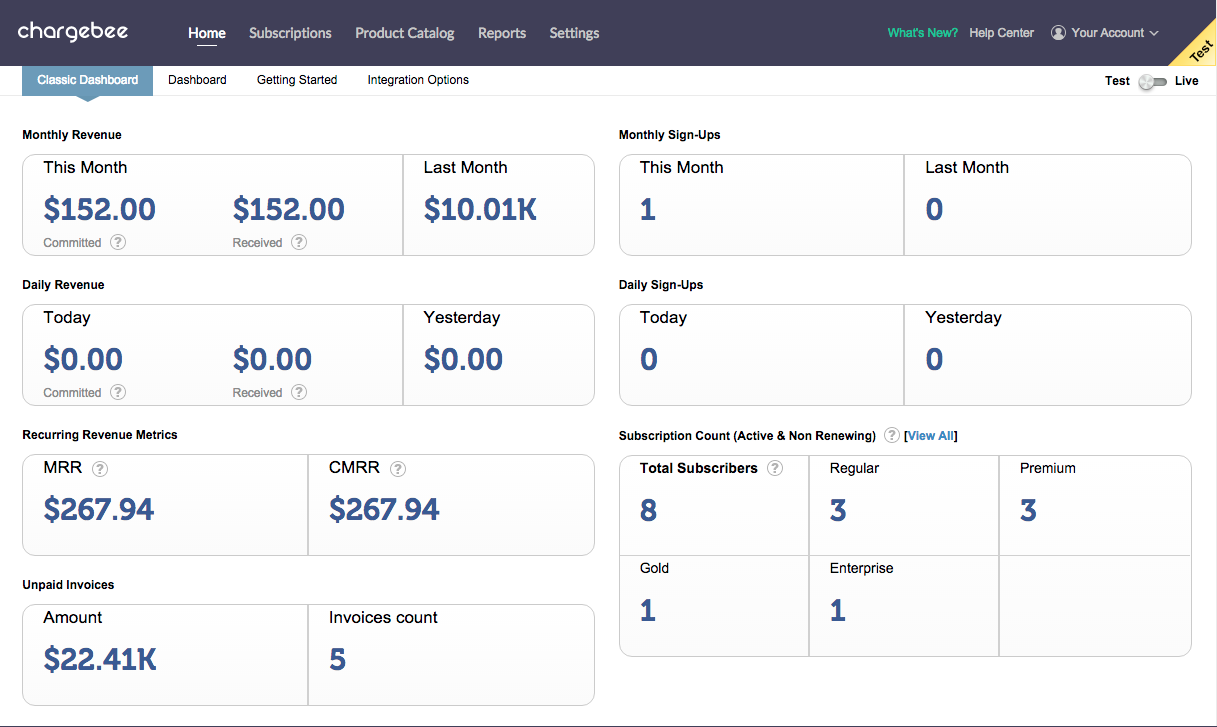
Chargebee is a subscription management platform aimed at SaaS businesses that want to scale.
It’s widely used by startups and mid-market companies that outgrow manual invoicing or hit the limits of basic billing plugins.
Chargebee stands out for its ability to handle complex and varied billing scenarios beyond basic recurring payments. It supports everything from freemium trials to usage-based billing, allowing businesses to tailor pricing models as they scale.
It also helps teams improve financial accuracy with tools for revenue recognition, tax compliance, and subscription reporting.
It integrates well with CRMs, accounting tools, and analytics platforms, making it a good fit for businesses looking to build a subscription tech stack.
However, initial setup and configuration can be complex, especially for those migrating from less advanced systems. This means it’s better suited to businesses with some internal technical capacity.
Key features
- Flexible billing models, including fixed, usage-based, tiered, and hybrid options
- Supports trial management and promotional coupons
- Automated dunning and revenue recovery tools
- Integrates with common platforms like HubSpot, Salesforce, QuickBooks, and more
- Revenue recognition and tax compliance tools
✔️ Pros
- Excellent billing flexibility for SaaS and B2B use cases
- Strong support for compliance and audit readiness
- Wide range of integrations with enterprise tools
- Built-in analytics and forecasting dashboards
❌ Cons
- Complex setup and configuration
- It may be overly complex for small teams with basic billing needs
- Pricing increases as features are unlocked
Pricing: Chargebee offers a free Starter plan for the first $250K of cumulative billing, after which a 0.75% fee on billing applies. The lowest fixed-fee paid plan, Performance, starts at $599/month (billed annually) for up to $100K of billing per month, with a 0.75% overage fee on billing thereafter. Higher tiers unlock advanced features, more users, and enhanced support. Custom pricing is available for enterprise clients.
4. Sticky.io
Best for: Larger ecommerce businesses that want more control over how they sell subscriptions, run offers, and keep customers from cancelling.
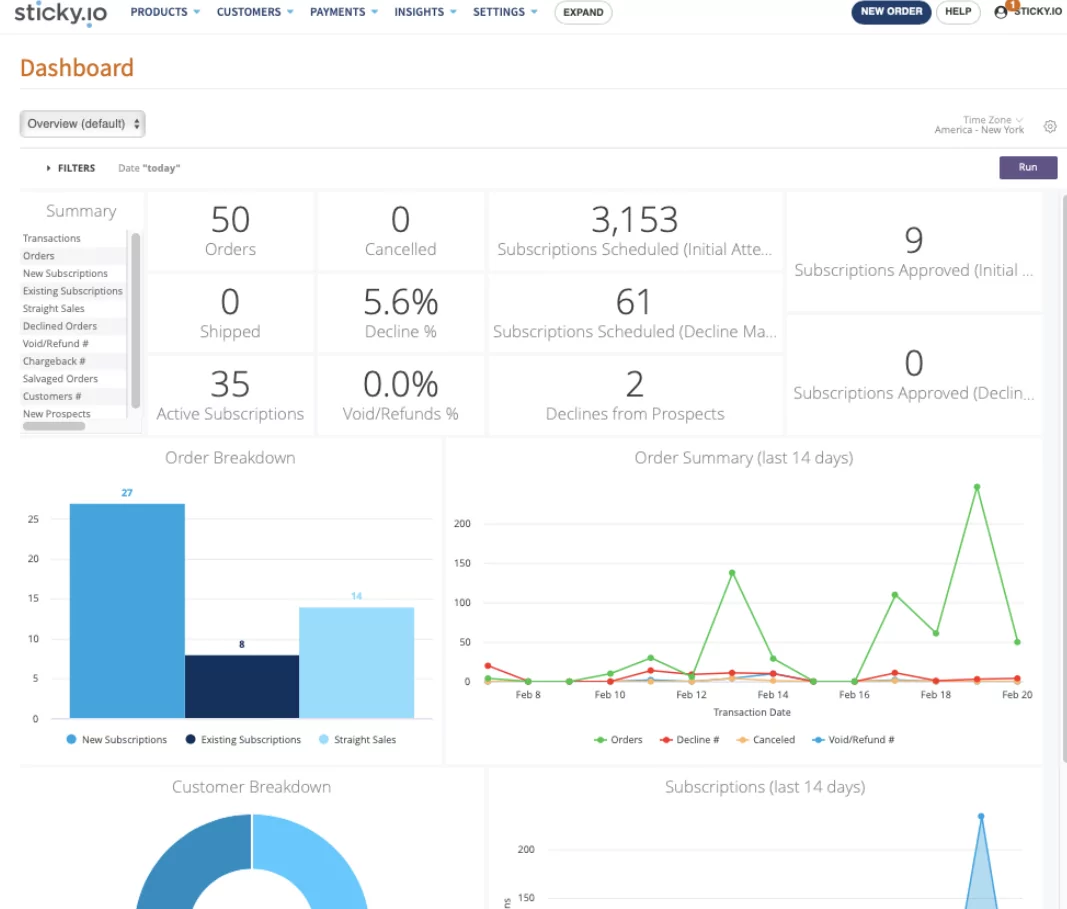
Formerly known as Limelight, Sticky.io is built specifically for ecommerce businesses selling physical products at scale. While most platforms in this list offer core features like billing, renewals, and customer portals, sticky.io also supports promotions, bundling, and churn reduction, meaning it suits brands looking to optimise revenue per customer.
Sticky.io offers flexibility in configuring offers. You can build custom flows that support trials, prepaid plans, bundling, discounts, loyalty rewards, upsells, and even advanced promotional logic like expiring coupons or time-based offers, all without needing third-party tools. It also offers tools for churn prevention that go beyond basic dunning.
Compared to Subbly, sticky.io is more complex and the setup can take more time and expertise. It’s therefore suited to larger teams with marketing and development support.
It doesn’t include a built-in website builder or onboarding tools for solo founders; instead, it’s designed to integrate into an existing e-commerce stack and provide teams with maximum flexibility and control.
Key features
- Fully standalone platform focused on ecommerce subscriptions
- Deep support for bundling, loyalty, discounts, and multi-step offers
- Tools for churn prevention, including cancellation flows and offer testing
- Built-in fraud prevention and PCI-compliant checkout
- Customisable APIs and integrations with major ecommerce tools
✔️ Pros
- Powerful promotional and retention capabilities
- Standalone platform, not tied to Shopify or any one ecommerce system
- Designed for scaling physical product subscriptions
- Strong support and onboarding for enterprise and mid-market brands
❌ Cons
- Not suited to early-stage or non-technical teams
- No built-in storefront or landing page builder
- Pricing is not transparent and requires a custom quote
Pricing: Sticky.io does not publish pricing publicly. Pricing is custom and depends on volume, feature needs, and integration complexity. However, potential customers can request a free trial.
5. Zuora
Best for: Large enterprises with complex subscription models and custom workflows.
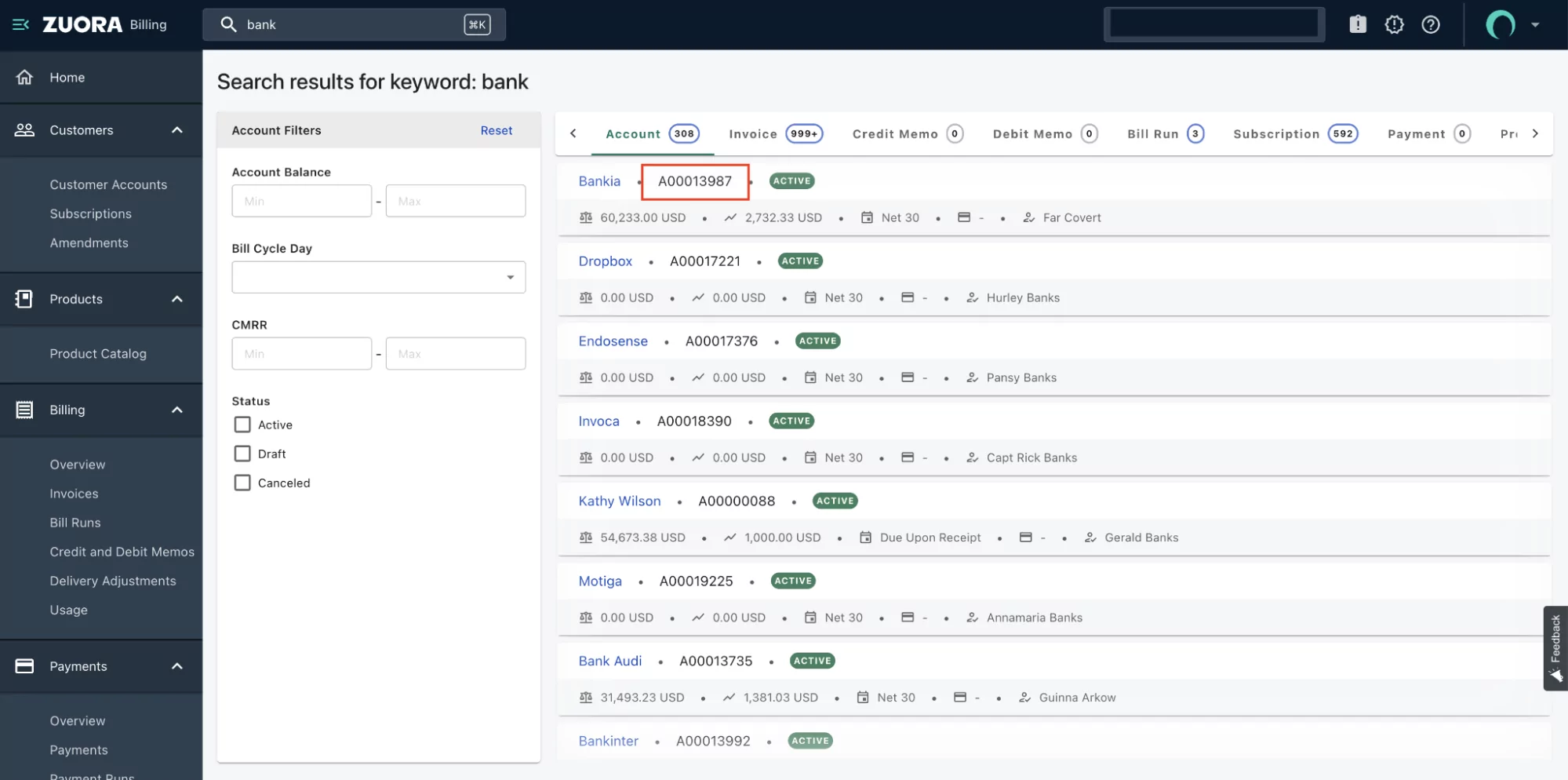
Zuora is an enterprise-grade subscription management platform designed for companies with complex operations, global reach, or highly customized billing needs.
It’s used by major brands like Zoom, Ford, and Siemens; businesses that manage high volumes of subscribers, multiple product lines, or hybrid pricing structures.
Zuora’s strength lies in its extensive control and customization offerings. It supports a wide range of billing models, usage-based pricing, multiple currencies, and global tax logic.
Its workflow engine can automate everything from invoicing to revenue recognition, and it integrates with ERP systems like NetSuite and SAP for seamless financial reporting.
Where other platforms prioritize simplicity, Zuora leans into complexity. This makes it a great fit for companies with dedicated billing, finance, and engineering teams. But it’s not so good for startups or lean teams that need fast deployment and little setup.
It’s also worth noting that Zuora requires a longer onboarding process, and pricing is entirely custom, as it usually targets mid-market to enterprise clients.
Key features
- Supports advanced billing models such as usage-based, hybrid, tiered, and custom pricing
- Automated revenue recognition and global tax compliance
- Workflow automation for billing, invoicing, and renewals
- Deep integrations with CRMs, enterprise resource planning tools, and custom APIs
- Reporting tools for subscription metrics and forecasting
✔️ Pros
- Built for scale and complexity
- Highly customizable workflows
- Supports international operations and compliance
- Strong integration with enterprise systems
❌ Cons
- Long implementation time
- Steep learning curve for new users
- Custom pricing with no public plans
Pricing: Zuora uses a fully custom pricing model, based on business size, feature requirements, and volume. It’s positioned for enterprise use and typically not cost-effective for smaller businesses. A demo is required to explore its plan options.
6. Cratejoy
Best for: Small ecommerce businesses that want a ready-made marketplace to launch and sell subscription boxes.
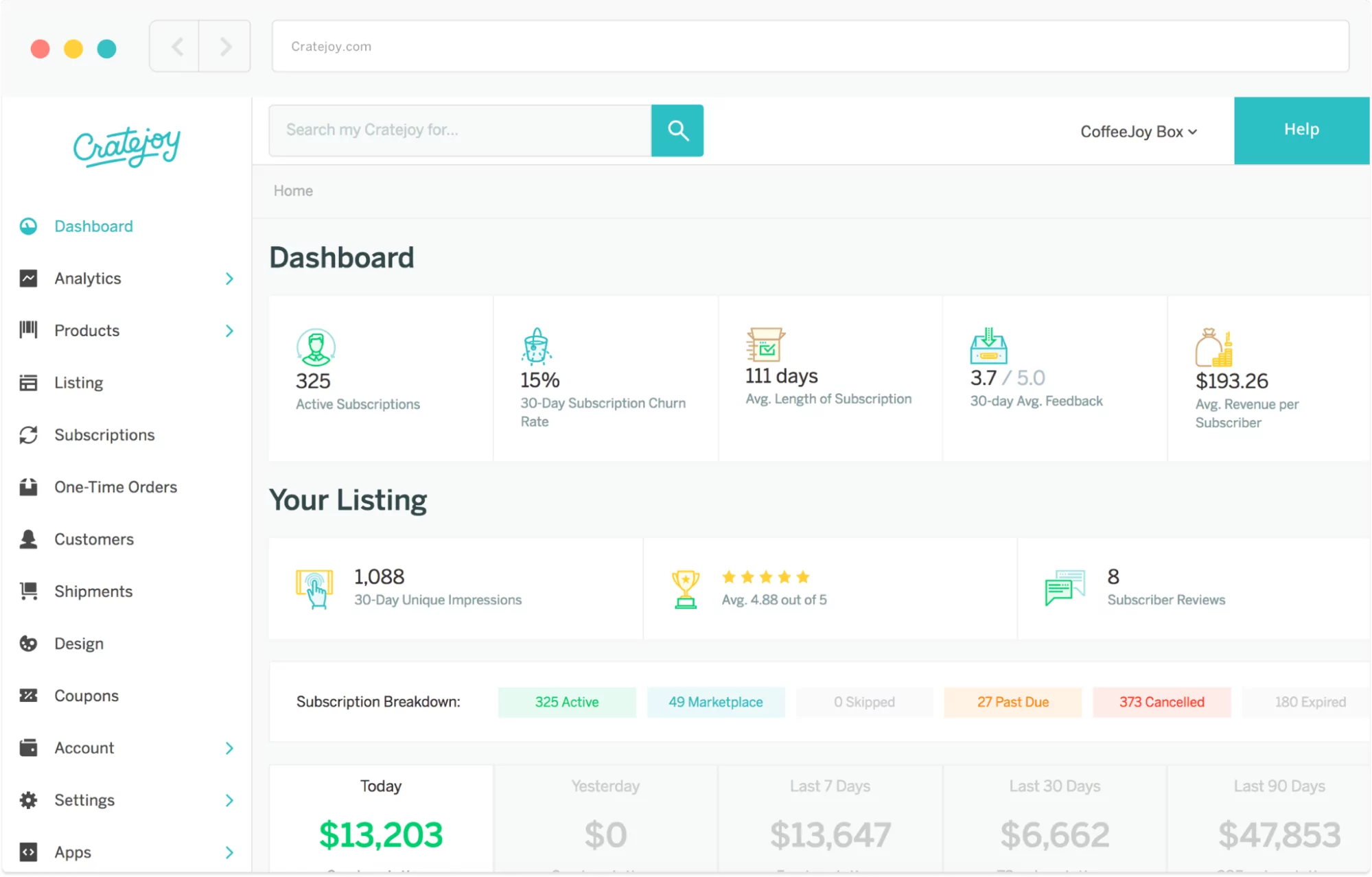
Cratejoy is best known as a marketplace for subscription boxes. It helps small businesses gain exposure by listing their products on a central platform visited by millions of shoppers each month.
However, it also offers a basic ecommerce storefront builder with subscription management features. This setup makes Cratejoy a good choice for entrepreneurs who want to launch a subscription box business quickly and don’t mind operating within the platform’s ecosystem.
However, it’s important to note that Cratejoy is marketplace-first, not platform-first. The majority of merchants use it for its marketplace visibility, not its backend tools.
While Cratejoy does offer hosted storefronts, customization options are limited compared to platforms like Subbly, which provide more granular control over the entire subscription experience.
You also don’t get ownership of customer data from marketplace sales, which may limit your ability to build long-term customer relationships outside the platform.
In short, Cratejoy is a good starting point for newcomers who value exposure over flexibility. However, growing brands may quickly encounter limitations and seek a more powerful, scalable solution.
Key features
- Access to the Cratejoy Marketplace for instant visibility
- Hosted storefront builder with basic subscription management
- Supports recurring billing, coupons, and gift subscriptions
- Built-in customer portal for managing subscriptions
- Basic analytics and order management tools
✔️ Pros
- Easy to launch with minimal setup
- Access to a built-in customer base via the marketplace
- Simplifies the logistics of launching a subscription box
- No upfront costs for using the marketplace
❌ Cons
- High commission fees on marketplace sales (11.25%)
- Limited customization and branding control
- Storefront features are relatively basic and less flexible than competitors
- Customer relationships tied to the Cratejoy platform
Pricing: Cratejoy offers two main options. If you only want to list on the Cratejoy Marketplace, the plan starts at $24.99/month plus 1.25% + $0.10 per transaction, with an additional referral fee on marketplace sales.
For brands that want a standalone storefront, the Essentials plan starts at $59/month (billed annually), while the Advanced plan with extra tools like dunning and referral features costs $159/month. All plans also incur Stripe processing fees.
7. Stripe Billing
Best for: SaaS companies that want flexible billing with built-in no-code tools and global scale.
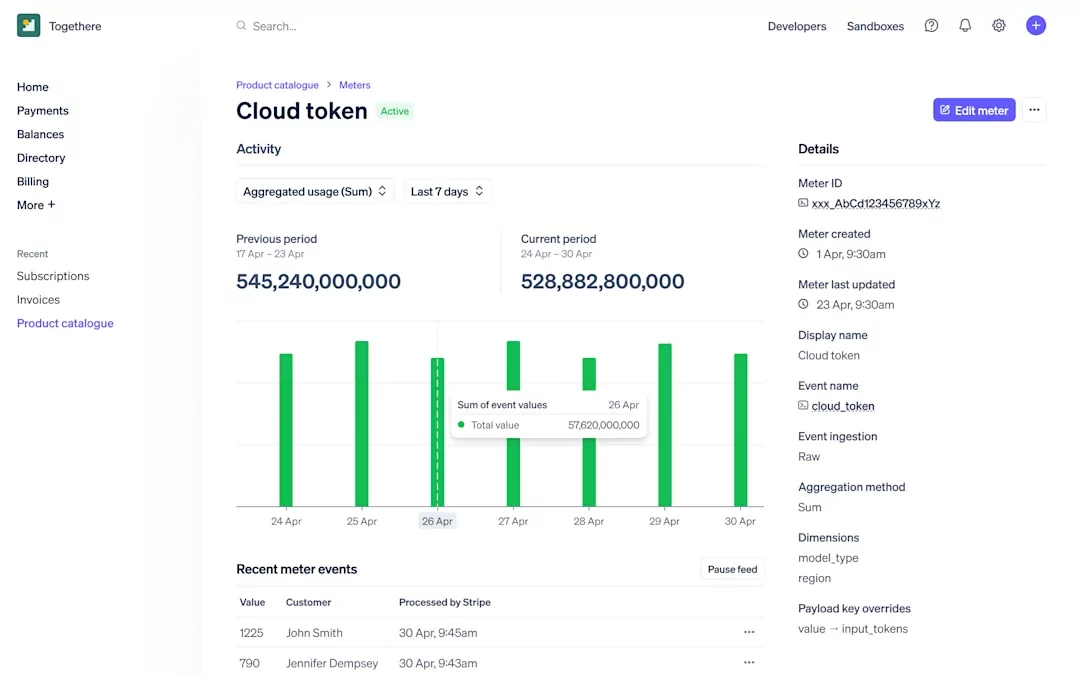
Stripe Billing is part of the broader Stripe family of payments tools and is designed to handle recurring billing at scale.
One of Stripe’s biggest strengths is that it supports technical and non-technical users.
For non-technical users, it offers a no-code interface. This allows you to launch subscriptions using its hosted checkout, create dynamic pricing tables, send hosted invoices, and manage customer subscriptions directly from the dashboard.
Its customer portal and automated dunning flows can also be enabled and configured without touching code.
Technical teams that want to control their workflows can use the platform’s robust API and integration options. This allows them to set up advanced features, like usage-based billing, entitlements, or custom subscription logic.
Because it supports both technical and non-technical users, it is suitable for companies of all sizes.
However, it doesn’t include tools related to website building, CRM, inventory, or shipping, so it may not suit businesses that sell physical products or those that need all-in-one systems.
Key features
- Hosted checkout, pricing tables, and a no-code customer portal
- Usage-based billing and metered charges
- Revenue recognition and tax compliance
- Smart retries and automated dunning flows
- Integration with hundreds of SaaS tools and payment methods
✔️ Pros
- No-code setup for most core subscription functions
- Highly scalable and global-ready
- Developer tools are available when needed
- Trusted infrastructure and compliance baked in
❌ Cons
- Not an all-in-one platform and may require other tools
- Limited front-end customization for non-developers
- Usage-based pricing can be complex to predict
Pricing: Stripe Billing offers a Standard plan that charges 0.5% on recurring charges. For more advanced features, including revenue recognition and increased automation limits, the Advanced plan charges 0.8% on recurring and one-time invoices. It’s important to note that these fees are in addition to Stripe’s standard payment processing fees (e.g., typically 2.9% + $0.30 per successful card charge in the U.S.), which apply separately.
8. Paddle
Best for: SaaS companies selling globally that want built-in tax compliance and payments.
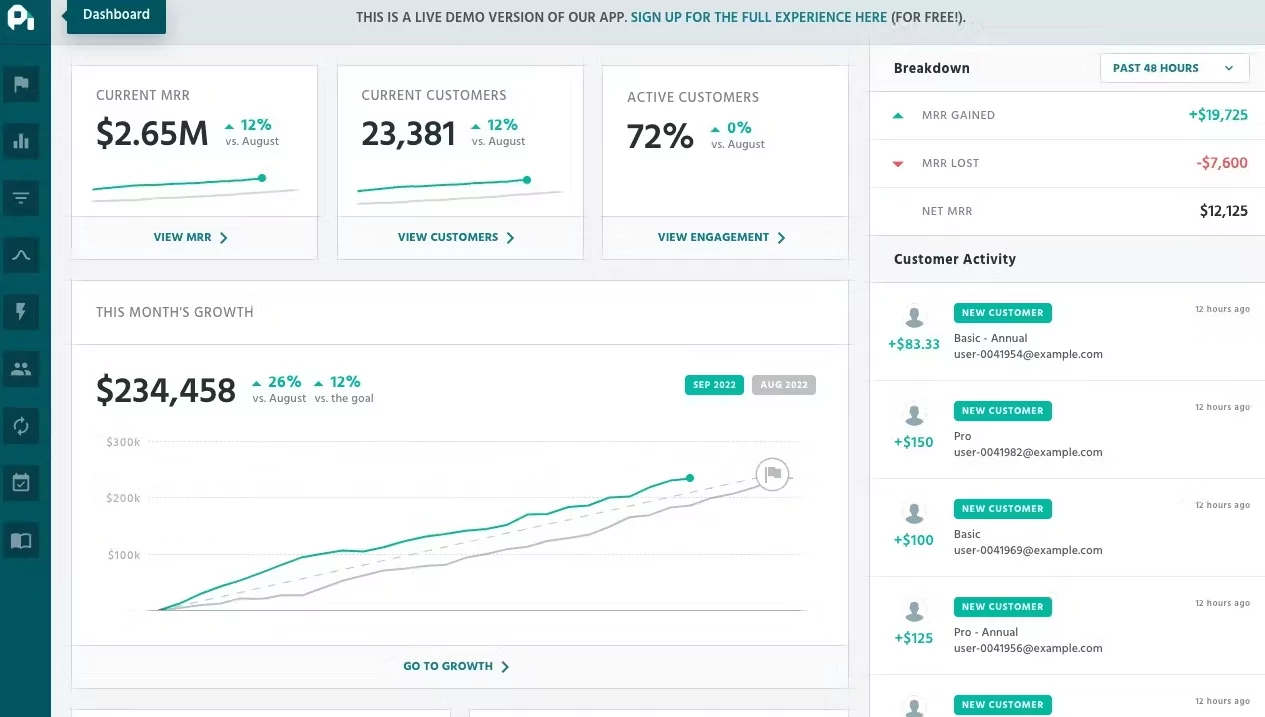
Paddle is an all-in-one “merchant of record.” That means it handles payments, global tax compliance, invoicing, fraud protection, and chargebacks on your behalf.
However, it also offers subscription management solutions built specifically for SaaS businesses that sell internationally.
This approach makes Paddle especially suited to SaaS subscription companies that want to expand globally without needing to connect a patchwork of tax tools, gateways, and legal entities for every region.
Billing models are flexible enough for most subscription use cases, with flat-rate, tiered, usage-based, free trials, and localized pricing all supported.
However, the tradeoff is that most of Paddle’s workflows come preconfigured, which makes it less customizable than platforms like Stripe or Chargebee.
It’s built for efficiency and ease, so it may not suit companies that want to control workflows at a granular level.
Key features
- Built-in payments, tax compliance, invoicing, and fraud prevention capabilities
- Supports global currencies and localized pricing
- Usage-based and tiered billing options are available
- Preconfigured checkout
- Supports SaaS subscription lifecycle management
- Integrates with common CRM and analytics tools
✔️ Pros
- Handles global tax and compliance for you
- Great for scaling internationally without added overhead
- Reduces operational burden around payments and invoicing
- Transparent pricing with no hidden fees
❌ Cons
- Limited customization compared to dev-led platforms
- Less control over the full checkout experience
- Not ideal for physical product subscriptions
Pricing: Paddle operates on a pay-as-you-go model, charging a flat fee of 5% plus $0.50 USD per transaction for its standard offering. This all-inclusive rate covers payment processing, global sales tax compliance, fraud protection, and subscription management, with no setup or monthly fees. Custom pricing is available for businesses with higher transaction volumes or specific requirements.
Choose the Right Subscriptions Management Platform for Your Business
The best subscription management software depends on your business model, team, and how central customer subscriptions are to your growth.
If you need something flexible, intuitive, and purpose-built for subscriptions, without developer overhead, Subbly is a strong fit.
It’s built for businesses that lead with subscriptions, not those adding them as an afterthought.
With built-in subscription billing software, as well as tools for automation, customer experience, and personalization, Subbly helps you launch, manage, and scale, all in one place.
Start your free trial today and see how Subbly can simplify your subscription operations.

